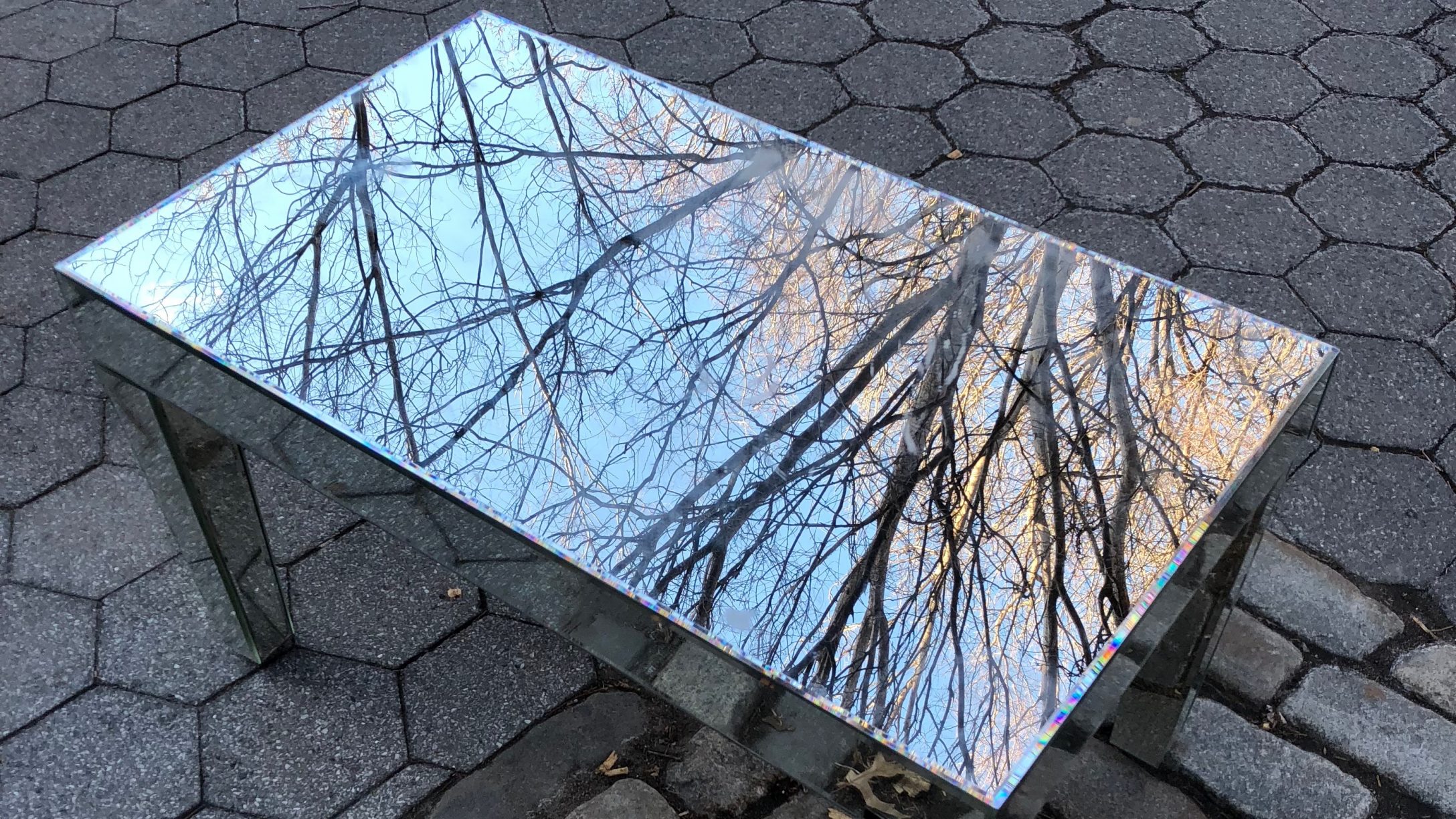Sandy Cioffi’s conversion moment came at a film festival. In 2014 at the annual Sheffield Doc/Fest, Cioffi strapped on an Oculus Rift headset to try the virtual reality experience Project Syria. This was one of the first times Cioffi, a video artist and documentarian, had entered VR. “I know it sounds corny,” she told me, “but I quite literally was stopped in my tracks with one of those ‘your life is never going to be the same’ moments.”
Project Syria, which premiered at the 2014 World Economic Forum in Davos, has become a well-known example of the power of interactive media in journalism. Made by journalist and filmmaker Nonny de la Peña—often referred to as the “Godmother of virtual reality”—the video situates the viewer at the site of a missile explosion on an Aleppo street. A second scene takes place in a refugee camp. Both are accompanied by real audio captured at each site. The re-creations are as exact as possible.
For Cioffi, the project opened up new ways to confront a formal and ethical problem she had long struggled with as a documentary-maker. For instance, some aspects of Sweet Crude, her award-winning 2009 movie about oil extraction in the Niger Delta, bother her in retrospect. In her words, Sweet Crude follows the classic “extraction model” of storytelling: go somewhere, scoop up material according to the story you want to tell, and use it to build a cohesive narrative. In actuality, much of what she filmed in Nigeria didn’t fit neatly into the storyline of a movie about Africa that Western audiences would expect or understand—but with single-channel filmmaking, the author has to make editorial choices. In response, the audience has no choice but to consume the given narrative—“and damn if it doesn’t feel like the truth.”
On the other hand, when producing 360-degree experiences taken from life, the filmmaker has to hand it all over, contradictions and all, and leave it to the viewer to assemble a meaningful story from the information given. The realism and interactivity afforded by VR make it harder for the filmmaker to “own” the story, as Cioffi says. Partially for this reason, she somewhat jokingly compares making and using VR to “going to church. It feels like I’m not allowed that dishonesty very easily anymore.” Although she acknowledges there’s no guarantee for how users will interpret a simulated scenario, “if you place someone inside an emotional truth, there is a way that they’re not as easily let off the hook. You’re more indicted with responsibility for the world around you.”
Cioffi now runs fearless360, a production company for VR and augmented reality, or AR, in which computer-generated material is superimposed on the real world (think Pokémon Go). “I believe that in simulated environments, whether you film them in stereoscopic live-action 360, or you do what Nonny does and take primary source media and re-create it, or you make something entirely poetic and new with a human truth—no matter which one of those you choose, in my book when the audience member is brought to that experience in a more embodied way it just seems to me that it’s a more fair fight—even though I know that can sound like ‘What do you mean, it’s so manipulative!’ ” Despite the potential for even more advanced media fakery in VR, could embodied experiences actually level the playing field, allowing media consumers to choose in a more informed way how much to believe of what is seen and felt?
The ideal of total honesty—transparency—undergirds the boom of journalistic interactive media projects over recent years. De la Peña launched a digital media company in 2007 called Emblematic Group that has gone on to produce more than 10 such works, including Project Syria. Some, like Greenland Melting, are constructed from flawless 360-degree video; others, like Project Syria, are animated reenactments. Recent years have seen a boom in similar projects. Amnesty International, along with Aleppo-based activists and the San Francisco-based design agency Junior, produced its own version of immersive Syrian suffering with Fear of the Sky, a 360-degree, high-definition VR tour through bombed-out Aleppo. In a collaboration with the UNHCR, the Guardian’s “in-house VR team” made a seven-minute illustrated 360-degree movie called Sea Prayer, which tells a story about a Syrian father and son, scripted by Khaled Hosseini. Not all of these are fully interactive, but all include 3D representation in which the viewer has some ability to maneuver or explore.
There are two separate but twinned approaches to building interactive media with humanitarian aims. One stems from the belief that verisimilitude breeds empathy: walk a mile in her (literal) shoes without being told what to believe, and you’re more likely to form a personal connection. Here, the idea is that the thinner the membrane between viewer and viewed—the less mediated the experience feels—the more emotionally resonant it will be. Of course, the less mediated the story feels, the more technology is actually required to mediate it; creating the illusion of total transparency requires a lot of work.
The second is the choreographed narrative approach, premised on the idea that embodied immersion allows more persuasive storytelling. If VR experiences can tell a more compelling story than traditional media, the story will be more relatable and believable—ergo, it will inspire more empathy. The verisimilitude argument is that less artifice equals more feeling. The storytelling argument is that more artifice equals more feeling. Both want the viewer to feel more.
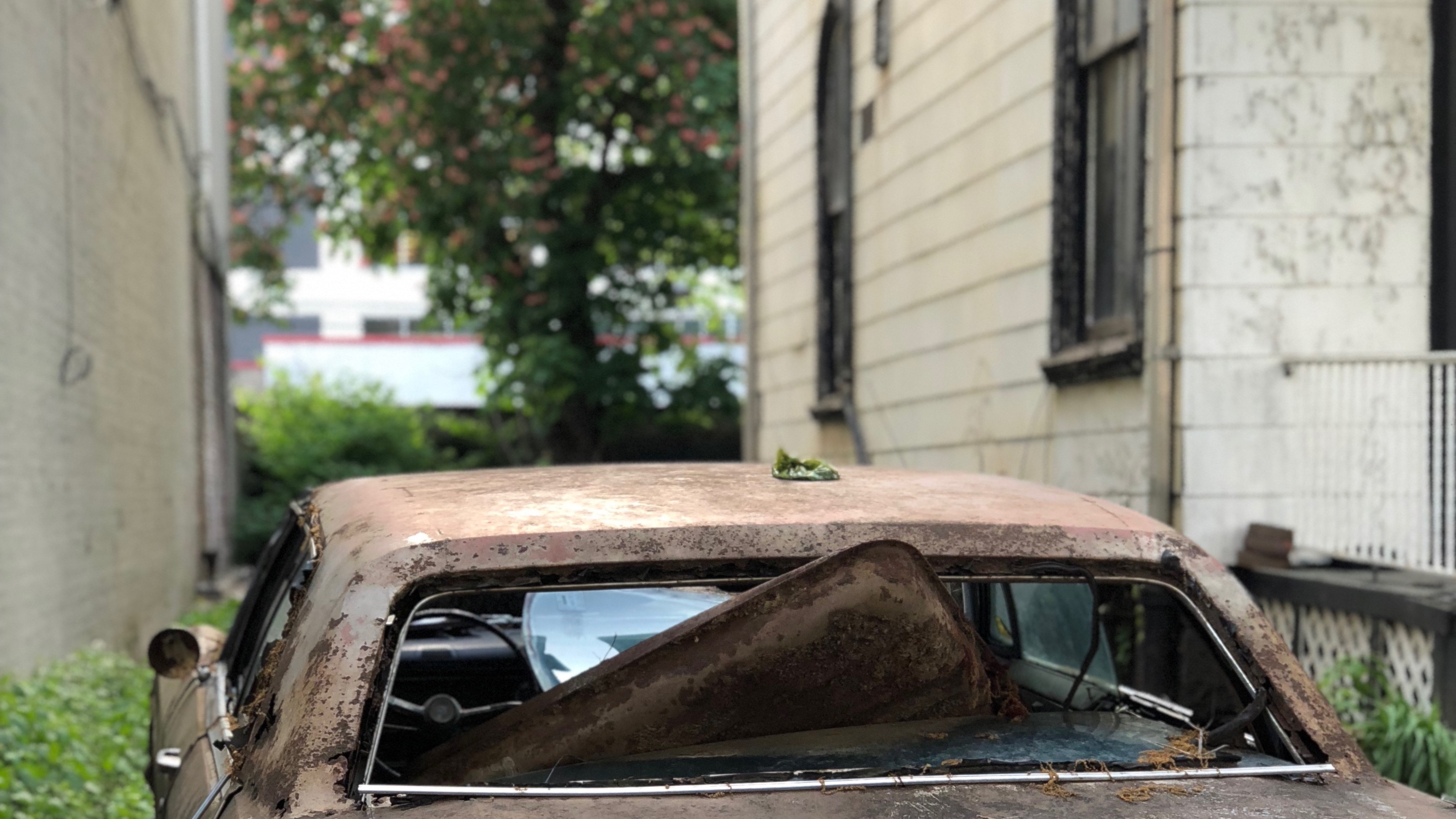
Much—too much—has been said about VR as the “empathy machine.” The phrase has been hawked most effectively by Chris Milk, founder of a media company called Within (formerly Vrse), who gave a TED talk in 2015 on the concept. Milk is also known for his 2015 VR film, Clouds Over Sidra, a collaboration with the United Nations and Samsung that takes users on a tour through Jordan’s Za’atari camp for Syrian refugees. The project has a clear goal: to prompt empathy and therefore a desire to support a cause with a human face. (In this case, the face is a 12-year-old child who leads the tour through the camp.) As David Darg, cofounder of interactive-media agency Ryot, puts it: “VR can create empathy like never before. It’s the ultimate fundraising tool.”
Statements like this make the empathy-machine model easy to deconstruct. Proponents like Milk and Darg provide a disturbingly functional view of emotion, reducing compassion to a lever to pull for spare change. In accordance with the classic neoliberal philanthropic model, rather than hold those in power to account for structural change, this view shovels ethical responsibility onto the individual; swaying opinion becomes simply a matter of managing consumer behavior.
It’s impossible to stay outraged about another’s suffering every hour of the day. Seeing more of it, some have argued, might actually max out the empathic faculties humanitarian projects intend to stimulate. For instance, Jaron Lanier, technologist and author the recent VR history Dawn of the New Everything, refers to this hard limit on compassion as the “empathy circle.” “If you make your circle of empathy too wide,” he writes, “you become incompetent and can’t help anyone.” But maybe more to the point, structures like white supremacy actually desire to see the suffering of the feared and hated other. Those worldviews are not likely to be overturned by showing yet more suffering.
There is obvious irony in spending millions to put Westerners in VR goggles in order to make them empathize with Syrian refugees, rather than, for instance, donating those millions to aid programs. Effective altruists, who believe in quantifying good, would definitely balk at the choice. But that irony precisely highlights the complex and often deadlocked relationship between individual decisions and macro systems of power. Leslie Jamison, author of The Empathy Exams, writes in a recent opinion piece: “Individual narratives can offer social justice movements grit and traction, but how do you scale up to a larger set of opinions about policy, or interrogations of the contemporary world?”
Scientifically speaking, there’s another problem with the idea that empathy can be manufactured. According to plenty of studies—both those that employ technologies like VR and also those that test chemical agents like the bonding hormone oxytocin—empathic response does not automatically correlate with altruistic behavior. Empathy is first and foremost an internal state, which might, or might not, lead to motivation and action. And when empathy does inspire behavior, the behavior is not always the desired positive kind; in some situations, strong empathic response may be as likely to promote distress and withdrawal as concern and bonding. Moreover, preexisting biases along axes like race can influence whom one tends to empathically identify with in the first place. This discovery has led to a burgeoning field of VR research in which one is placed in the avatar of an “outgroup” body to see if inhabitation rather than interaction might bridge the empathy gap. Some results in that regard are encouraging.
The question of empathy—what it is, what it does—aside, there is evidence that personifying catastrophes does encourage altruism. This is the “identifiable victim effect,” whereby the story of a single victim inspires compassion and action far beyond what facts and numbers can do. (Introductions to studies on the identifiable victim effect often cite the famous statement, usually attributed to Stalin, that “a single death is a tragedy; a million deaths is a statistic.”)
Yet if altruism in the form of donations and activism were really the goal, technologists could skip empathy altogether. Helping behavior can also be prompted by the illusion of heroism; flying a superhero avatar in a game makes people temporarily more altruistic because it “primes stereotypes related to superheroes.” But neither priming egoistic fantasies nor dosing subjects with affection-inducing hormones accords with the humanist fantasy whereby empathy is instigated through authentic experience, a transformational moment in which the self expands. The allure of a machine that provides those experiences, without the danger or the flight cost of sending people to a war zone, is hard to resist.

Documentarian Cioffi is by no means the only person to respond so strongly to Project Syria. Viewers’ tearful reactions have been extensively documented in news reports and reaction videos, which form an integral part of the life of the piece. Testimonials about the force of VR experiences not only constitute a selling point for the tech, but are a fundamental aspect of the content. As Lanier emphasizes in Dawn of the New Everything, the “overriding narrative arc” of a VR experience “is not within a virtual world, but in the real world.” The story starts before you put the goggles on and ends long after you take them off.
In the case of experiences like Project Syria, which are intended to convey the reality of trauma to promote awareness, user responses and reaction videos constitute a form of testimony proving that what happened “in there” has changed the user “out here.” Insofar as gathering firsthand testimony is a way of letting subjects speak for themselves, VR invites, and perhaps requires, a double testimony: the first regarding the primary trauma being depicted or described, and the second regarding the shadow-trauma of the viewer, the evidence of empathic response. The empathy machine, in this regard, is as much a trauma machine.
Maybe the advent of any new technology comes with a need to testify to its persuasiveness —and the ability to traumatize the user is one litmus test. Photography and film came with comparable mythologies about realism and trauma; in fact, this was exactly the basis for the Lumière effect, named after an urban legend in which viewers of a Lumière brothers 1895 film stampeded out of a theater when they mistook the train in the film’s projection for the real thing. Virtual reality does not represent a deviation from this historical media evolution, but instead a telling intensification—it shows how the ability of a medium to convey trauma as content, and in the process to retraumatize, has become intrinsic to the form.
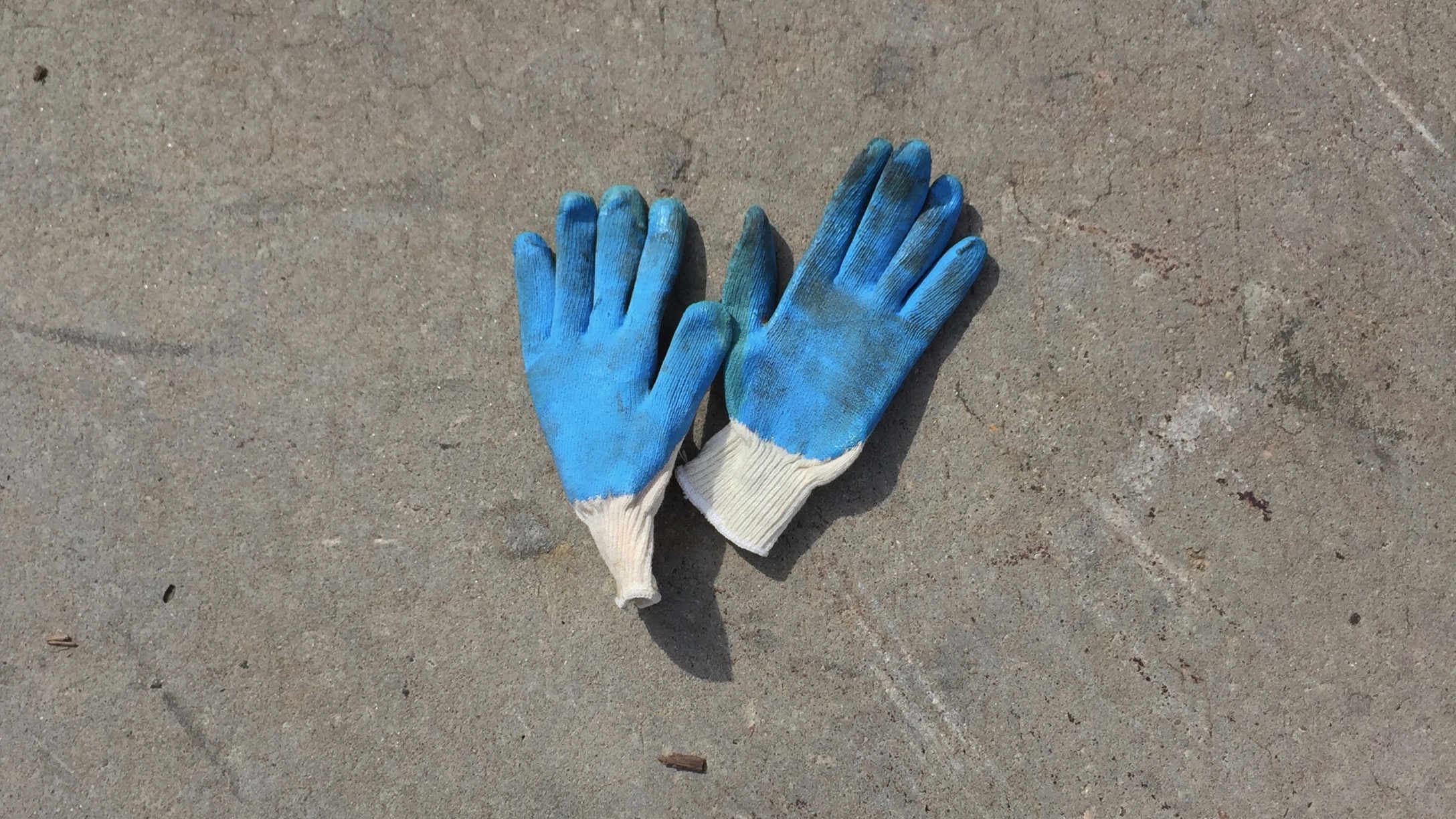
Lest one assume intentional traumatization is necessarily sadistic, consider its therapeutic applications. Revisiting past trauma is a central component of many strands of psychotherapy. Insofar as it can re-create lived experience from memory, VR offers a range of ways to treat post-traumatic disorders; exposure therapy, or reliving painful experiences through accurate virtual reconstructions, has been demonstrated to markedly decrease both PTSD and phobias. And moving around in virtual environments can help the injured retrain damaged nerve pathways, reduce phantom limb pain, and assimilate prostheses. Practicing movement with a virtual body can convince the brain to relate or re-relate to the real body.
When it comes to post-trauma therapy, the therapy occurs in the gap between the trauma and the simulation. If you can safely experience the car bomb on repeat, the fear becomes abstracted from its origin. The trick works because it feels real enough to evoke the trauma, but it also works because it’s a trick. Putting on a headset to relive the moment of an explosion is a way to recuperate and reclaim memory—to fill in the blind spots blasted by trauma, to acknowledge and own the story. The ways that the brain and body record trauma are still mysteries to some extent, but it appears that repetition of a narrative—what sounds paradoxically like a retraumatization—helps neutralize it. Multiple exposures desensitize what a single exposure has made raw.

Susan Sontag’s foundational critique of photography is often interpreted as a critique of desensitization: photography desensitizes the viewer to suffering because there are just too many pictures of it. But Sontag’s point is not really that mass media ruins humans’ ability to relate to one another—rather that it can flatten all experiences of pain into a general category of pain, creating an aesthetic of misery that overrides the specificity of any single case. “It is intolerable to have one’s own sufferings twinned with anybody else’s,” she writes. Lumping every sufferer into the category of human suffering is ultimately dehumanizing.
Focusing on making suffering visible can also effectively obscure the invisible systems producing that suffering. And it allows one to expunge—or, better, forget—the privilege of being the seer rather than the (suffering) seen. As Sontag explains in Regarding the Pain of Others:
“To speak of reality becoming a spectacle is a breathtaking provincialism. It universalizes the viewing habits of a small, educated population living in the rich part of the world, where news has been converted into entertainment . . . it is absurd to identify the world with those zones in the well-off countries where people have the dubious privilege of being spectators, or of declining to be spectators, of other people’s pain, just as it is absurd to generalize about the ability to respond to the sufferings of others on the basis of the mind-set of those consumers of news who know nothing at first hand about war and massive injustice and terror. There are hundreds of millions of television watchers who are far from inured to what they see on television. They do not have the luxury of patronizing reality.”
Such a one-way understanding of empathy reproduces power relations rather than levels them. It focuses only on the extent that I can relate to you. Psychology also has a language for this; scientists observe how feeling for another, known in some cases as “self-other overlap,” can become a projection, with the witness’s own beliefs and desires overriding those of the witnessed. Self-other overlap does not itself constitute empathy if it does not also lead one to consider the other as a separate person with agency and not just a facet of the self.
If VR is a trauma machine, many experiments (though certainly not all) conceive of it as a one-way machine. This is contrary to the dreams early VR evangelists had for the medium, which was never meant to simply provide immersion, but to provide true interaction: two-way or multidirectional communication and brand-new collaborative behaviors. Just like empathy, they imagined VR would be relational rather than directional, active rather than passive.
For this reason, Cioffi, de la Peña, and other VR designers have realized the necessity of providing interactive capabilities in virtual experiences. At the very least, de la Peña has suggested, after exiting a simulation, viewers should be given information about how to assist in a crisis they’ve witnessed, a sort of post facto interaction. Even better, they might be given the ability to act or make choices within the simulation. Best of all, they might communicate in real time with others in virtual space. Unlike the photography or television of Sontag’s era, VR allows the deconstruction of the one-way observer model. Throughout his book, Lanier argues that VR’s most important implementation is in shared, social experience—not transporting “us” into “their” reality, but co-constructing a new consensus reality in virtual space. Embodied experience, says Cioffi, should “not just be about how I have more empathy for you. And it’s not just about how I better understand me. It’s that I genuinely believe there’s a we.”

Trauma is an asset. An impoverished asset to be sure, but often the only asset granted to the dispossessed in late capitalism. Humanitarianism instrumentalizes and leverages this asset, finding ways to exchange it for other forms of capital. But beyond leverage for aid, trauma is intended to be a basic affirmation of humanity. Anthropologist Miriam Ticktin, who writes on humanitarian organizations, says that “an understanding of suffering as the basis of a universal humanity can result in the obligation to use suffering to barter for membership in the category [of] humanity.” The sufferer is granted human status by demonstrating the ability to suffer, which is then validated by the witness’s ability to understand the suffering as real. The secondhand experience therefore testifies to the humanity of the viewer.
If empathy shock therapy through exposure to trauma is the best way to raise funds, what, exactly, is being sold? Guilt? Absolution? Not exactly. Their capacity to suffer is what makes them human; our capacity to empathize with their suffering is, in turn, what makes us human. Technologies like VR threaten the human-centric worldview, and coupled with technologies like AI, threaten the very category of “human.” Using VR for the recapitulation of suffering, for commandeering and appropriating others’ pain, for retraumatization, is a method of reaffirming the viewer’s humanity via the machine. But what does it say about our notions of empathy, and therefore humanity, that we think it can be best elicited through witnessing suffering? Might it not be as profoundly felt and proven through empathic identifications with other affective states, like joy?
Cioffi is adamant that VR’s true potential lies not in borrowing others’ suffering, but in giving people new ways to own their stories. “It’s not my right to decide how the people of the Niger Delta’s trauma should be valued,” she says. Just as they have the right to own their own data and their own DNA information, “communities have every right” to own “their own horrible stories and their own trauma,” and for that matter, their own joy. She is clear that she does not mean ownership in a “transactional” sense, as material for trade and consumption, but as something more like authorship—the ability to use new technology to show oneself how one wants to be seen. This would not be an exercise in borrowing someone else’s trauma, but in confronting one’s own.
For those reasons, Cioffi is now deeply involved with community outreach, educating users about how to write their own stories using VR and AR. Her Seattle-based company, fearless360˚, hosts workshops and labs for local artists, often from underrepresented groups, educating and providing access to (often expensive) immersive media technologies. Reckoning with ownership of stories—and the technologies with which to tell them—entails a “necessary recognition that a lot of the documentary tradition really did become like Global South apocalypse porn in order to try to get people off their chairs to write their congressmen to change international law,” Cioffi says. And while VR might be able to do this even more effectively, it can also do something else.
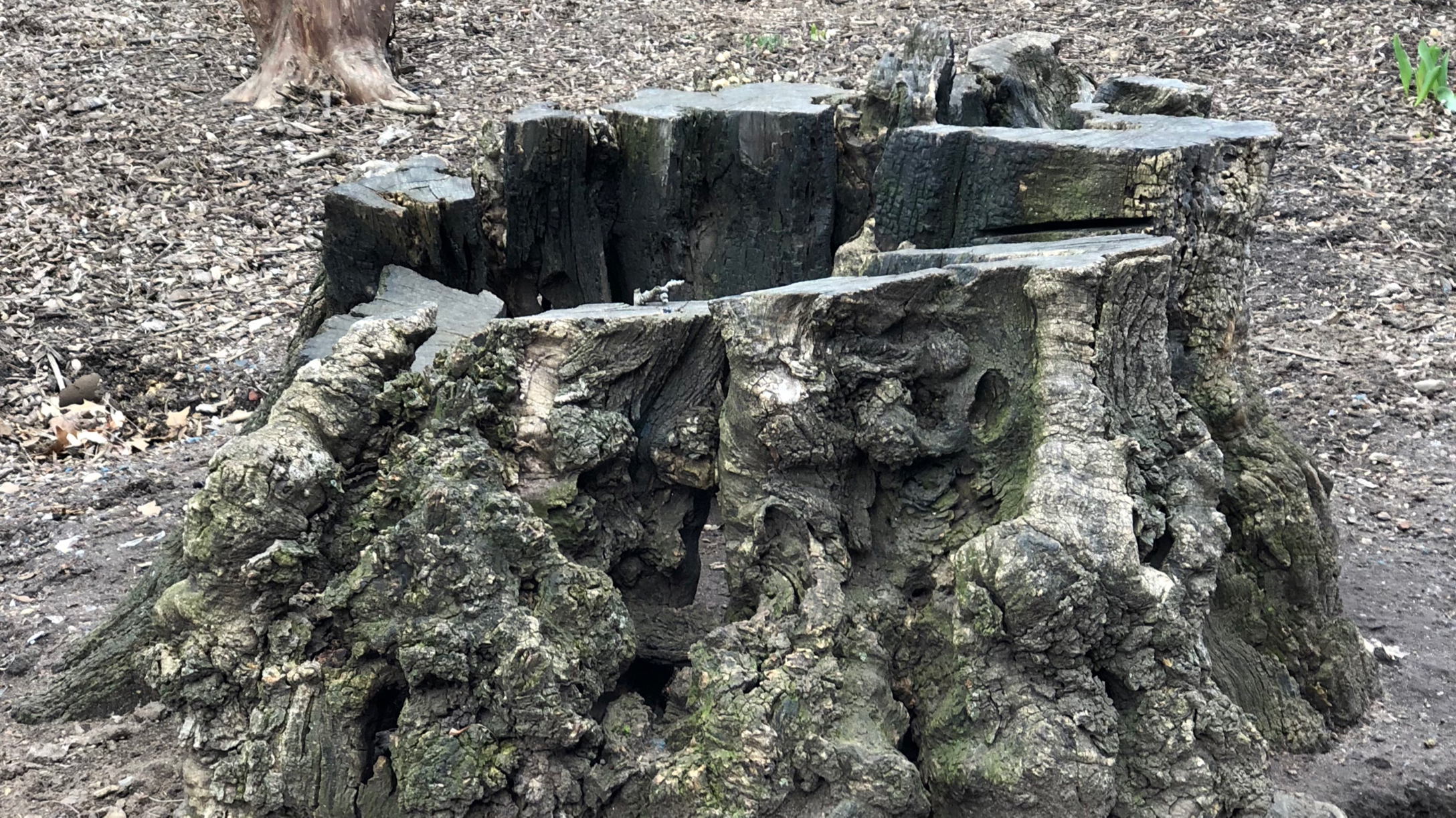
In 2012, the USC Shoah Foundation began a series of interactive media projects aimed at bringing its massive archive of testimony—over 55,000 recorded interviews with genocide survivors—to new audiences. For the first initiative, New Dimensions in Testimony, octogenarian Holocaust survivor Pinchas Gutter was filmed from several angles while responding to questions about his life. His answers to the questions were then fed into a learning algorithm that generates responses to theoretically any question by processing sections of Gutter’s speech. The product is a lifelike simulacrum of Gutter, who is able to answer visitors’ questions in real time from a library of stored material. It improves over time with use.
The virtual Gutter—who is currently shown as a two-dimensional projection but will eventually evolve into a portable hologram—is intended to educate, not to convince. Young audiences, the project initiators hope, may be more likely to relate to testimony when it comes from a lifelike source—but there’s no need to “trick” anyone into believing the speaker is real. According to Stephen Smith, the USC Shoah Foundation’s executive director, even young children seem to have a sophisticated understanding of the artificial nature of the simulation. And the artifice offers advantages beyond immortality: for instance, while users are deeply curious about Gutter’s experiences, “they’re much more willing to ask questions of the interactive testimony than they are of the individual, because they don’t want to hurt the individual’s feelings.”
Uninflected by the give-and-take of social behavior, talking to an AI allows one to sidestep an obligation to empathy and allows something more like emotional education. It educates about the individual suffering of the (absent) Gutter and the Holocaust, but it also allows one to experiment with what to feel and how to respond. The half-presence provides an odd form of testimony, given that its algorithm, not Gutter, is choosing what answers to give—but it also liberates Gutter and the user by outsourcing some of the trauma to the machine. Further, it removes the pressure and expectation of emotional response from the user.
Other projects Smith has presided over include The Last Goodbye, a room-scale VR tour led by Gutter through the Majdanek concentration camp, where his family died during World War II; and Lala, a short animated VR story for children about a dog who is separated from her family by the Nazis. These projects are VR, as opposed to New Dimensions, which is augmented reality powered by machine intelligence, and the way the different technologies affect audiences is an urgent area for study.
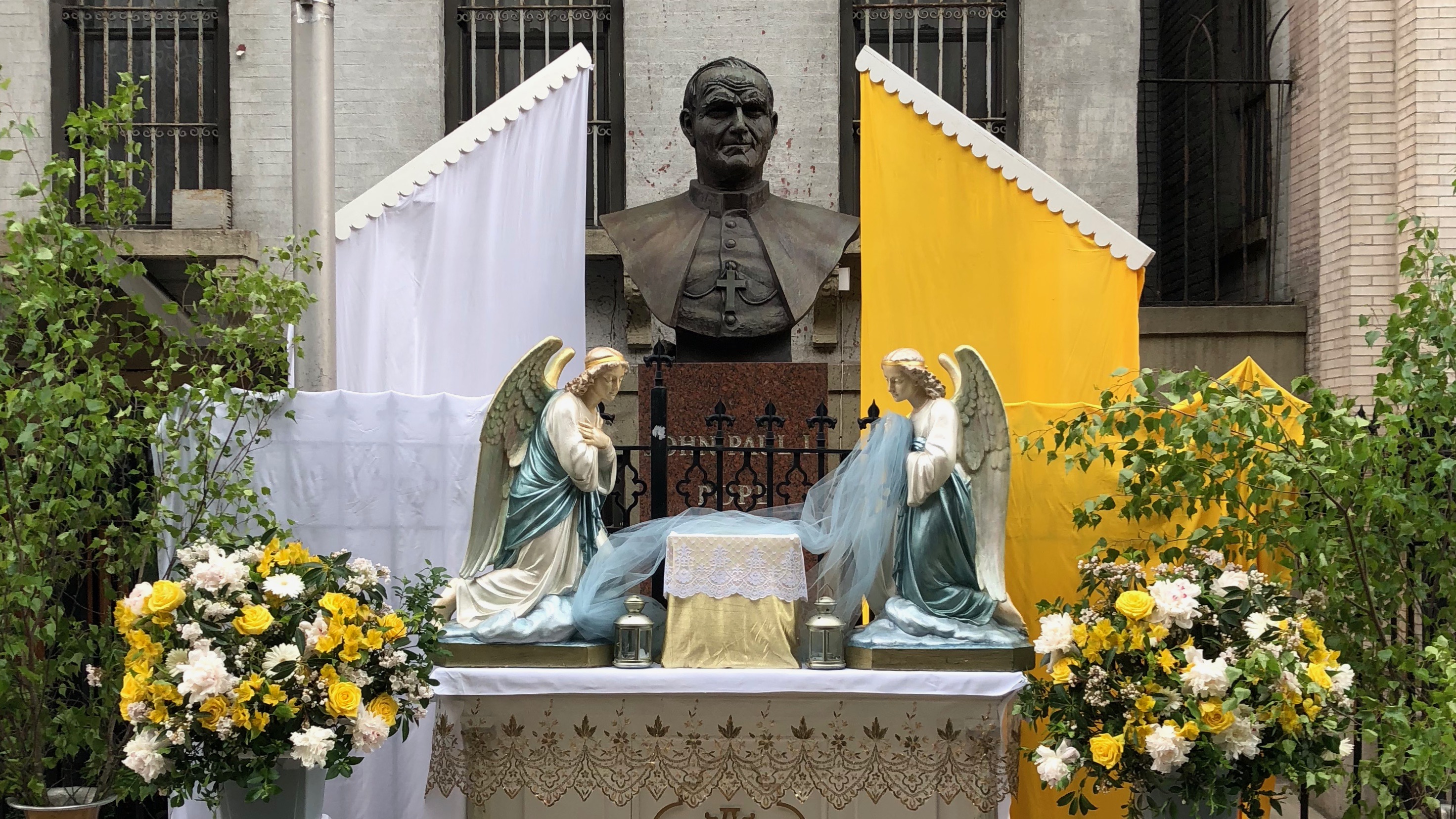
Anyone who has tried it will tell you that it’s very hard to step off a high ledge in virtual reality. You look down at a hundred-meter drop, which you know is the floor beneath your feet, and yet the illusion of depth overrides that knowledge. Your heart clenches, uncontrollably charged with adrenaline, and perception competes with cognition and willpower. I had been told this would happen by several people before I tried to make the leap, and I was not disappointed. In an Oculus game called Richie’s Plank Experience, where the player begins standing on a wooden plank jutting from the 80th story of a skyscraper, I struggled for two minutes before I could convince myself to step six inches forward onto the carpet.
The tech isn’t quite there yet; you still feel the weight of the headset, the temperature of the real room, but this does not diminish the out-of-body feeling. Toggling between belief and disbelief is exactly the point, and the fun, of the experience: feeling how indisputably beholden you are to your own body. You know and yet you know. Your disbelief is suspended for you by your body. In fact, only a few senses have to be tricked for a user to attain what de la Peña calls “duality of presence”: the brain’s ability to “split in two” and feel like it’s in real and virtual worlds at once.
Daryle Conners, an author and game designer currently working with the medical applications of VR, finds this experience of dis/belief to be a profoundly spiritual one. She told me: “By a very fundamental hijacking of, like, two of your senses—three, maybe, if you include a little bit of vibrating like haptics in your controllers—just through those senses being sort of fooled, your whole perception is changed. And we rely on that perception for so much of our truth, but really, when you see how malleable it is and how much it’s about subjective perspective, that’s one of the deeper things that VR shows us.” By mediating simulated reality so convincingly, VR can train one to view “real” reality as equally mediated. And in this way it could just as easily retrain away from the media-historical trajectory of verisimilitude-as-truth and its emphasis on trust versus trickery.
That is to say, if what we desire from VR is an exact replica of a fixed and stable reality within which to reproduce a certain idea of humanity, we are missing the whole point of what it does and can do: reveal the changeable nature of all reality and therefore the potential to change it for the better or manipulate it for the worse. Lanier writes, “The more intense a communication technology is, the more intensely it can be used to lie.” Seeing more does not mean believing more. Or, as architect and activist Eyal Weizman has said, “truth has become a function of bandwidth and resolution”; in the current paradigm, the more we can see, the more we will demand to see to believe. Suspicion—an unshakeable belief that one is being lied to or manipulated—will always be built into a political system entirely reliant on high-definition verisimilitude for truth claims. New media will always be required to prove what’s real.
When we spoke on the phone, Smith, the USC Shoah Foundation’s executive director, had just returned from a trip to the Kutupalong camp in Bangladesh, where he was gathering the testimony of Rohingya refugees. When it comes to gathering evidence, he says, “we’re not asking the Rohingya to tell a story that will play well on the media to get people to feel compassionate or feel empathy or send their money to the Red Cross. What we’re trying to do is to establish timeline. We’re trying to establish if what happened to them over this past year points to and demonstrates that there was a pre-planned and strategic intent to destroy in whole or a part of a population”—as in the legal definition of genocide.
According to him, legal testimony is “a completely different form of testimony to the post-genocide interview,” which is personally inflected, where emotion is as important as accuracy, and where “facts are very, very sticky.” Yet both kinds of testimony, he says, are crucial for different reasons, and “these different types of narrative do not conflict with one another.” Fact-based evidence and personal narrative are not mutually exclusive; they are mutually supportive. One aims for verisimilitude. The other aims for truth.

